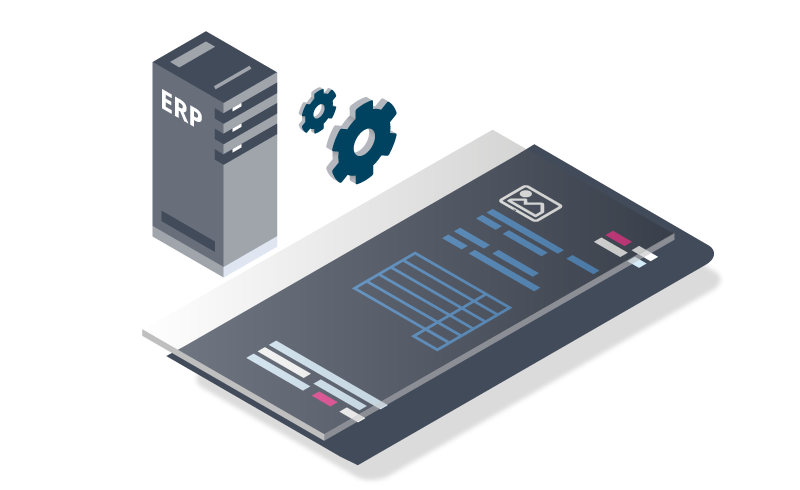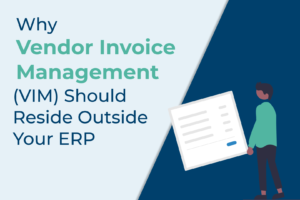Document automation with inbound processing refers to various documents or data enterprises receive from trading partners such as customers, suppliers, etc. These documents may include purchase orders, invoices, delivery notes, goods received notes, ASN, etc. Inbound documentation and document automation are crucial in business processes such as procurement, order management, inventory management, logistics, accounting, supply chain management, compliance, accounts payable, etc. It enables organizations to communicate with trading partners transparently, verify data accuracy, collaborate with internal departments, and even comply with regulations. The quick-paced business environment of today demands effectiveness, productivity, and Return on Investment at every turn. When resources are required to complete repetitive duties, the rigidity of a manual system challenges process scalability causes errors, and incurs delays.
The modes of inbound document transfers
- Electronic Documents: Documents or data are transferred electronically using email, EDI, or web-based forms. They also include physical documents that have been digitized using elementary methods like scanning.
- Web Portal: Companies also received inbound documents via web-based portals. These portals make it easier for vendors or customers to track updates online.
- Physical Documents: The mode of document data exchange depends on the nature of the documents, file size, and the security and privacy requirements needed. Inbound documents can come in various forms and include various types of information.
Types of inbound documents
- Invoices: Documents from suppliers or vendors listing the goods or services purchased and the amount due.
- Purchase Orders: Documents from customers that confirm their intent and the details of their orders, including the items requested, quantities, and other shipping details.
- Delivery Notes: Documents that accompany physical goods and provide details about the delivery, including the date, the items delivered, shipping and billing address, the reference order /PO number, etc.
- Contracts: Legal documents that outline the terms and conditions of a business relationship.
- Financial Statements: Documents that provide information about a company’s financial performance, including balance sheets, income statements, and cash flow statements.
- Health Records: Documents that provide information about a patient’s medical history, including diagnoses, treatments, and test results.
- Regulatory Documents: Documents required by law, such as tax forms, licenses, and permits.
- Shipping documents: typically include bills of lading, packing lists, and invoices, with details of the contents of a shipment, the recipient, and any associated costs.
- Compliance Document: These documents may include policies and procedures, licenses, and other legal documents that require strict adherence to guidelines and regulations.
Inbound documents can contain both structured and unstructured data. Structured data is organized in a well-defined and consistent format. In the case of EDI, it uses standardized data formats and protocols to streamline the exchange of information. This structured data is typically in a machine-readable format, such as XML, JSON, EDIFACT, etc., allowing for automation and integration with other systems.
Unstructured data, on the other hand, does not have a predefined data model or structure. This data type is often found in scanned copies of documents in pdf, jpeg, and png formats. Excel sheets and text files are some other examples. Other examples of unstructured data in inbound documents include customer feedback, clinical reports, customer preference statistics, and many more. Structured and unstructured data are essential for businesses, providing valuable information about customers, operations, and processes.
The challenges of manual inbound document processing
- Time-consuming: The manual process of dealing with a large volume of documents is time-consuming. Manually entering minute details of the order and revisions in documents like purchase orders cause more man-hours to be lost due to repeating the same task. One of the most time-consuming aspects is manually cross-checking and verifying the documents and their approvals.
- Error-Prone: The manual process increases the likelihood of human errors, such as incorrect data entry, duplication, misplacing or misfiling documents, causing significant hassles in the smooth working of the process.
- Limited scalability: The manual process needs to be more scalable and proves challenging with the increased volume or complexity of documents. In addition to the process, e.g., internal compliance norms show increased processing time.
- Lack of Transparency: Low real-time status of processes and silo working in most cases cause duplication of process. It also leads to more time required for coordination and difficulties in clarifying document approvals and disbursements.
- Expensive: Manual processing requires a lot of time and labor to sort, organize and enter data from the document manually. This can lead to higher labor costs due to the need for more staff, longer processing times, and increased potential for errors or inefficiencies.
Recurring issues like these result in an inability to meet demands and can negatively impact the business’s competitiveness, market standing, and profitability. The ultimate solution to these limitations is automating the inward documentation process. Document automation resolves issues by minimizing human intervention, increasing accuracy, reducing turnaround time, etc. Implementing automation can profoundly impact productivity and efficiency by eliminating errors and reducing processing time by 50% or more. Document formats and layouts do not limit inbound documentation, so automating these processes calls for advanced technology, such as intelligent document processing.
Use of document automation in different industries
- GRN automation: Automating the data entry process at the beginning of the supply chain can streamline the movement of consignments, increase efficiency, and reduce error. It can also enable real-time inventory tracking, making it easier to manage just-in-time inventory and reducing the risk of stockouts or overstocking. Overall, GRN automation improves accuracy, reduces errors, and saves time.
- Healthcare: Inbound document process automation has enabled healthcare organizations to handle documents such as patient records, insurance claims, and billing information. For instance, by automating the patient registration process, healthcare providers can reduce wait times, improve patient experience, and minimize the likelihood of errors.
Why is document automation important for businesses in the future?
The future and adoption of Intelligent Process automation (IPA) are expected to grow exponentially as digital transformations continue to drive growth and competitiveness. With the rise of big data, cloud computing, and artificial intelligence, IPA is poised to play a critical role in enabling organizations to manage the growing volume and complexity of inbound documents. Automating manual, time-consuming, and error-prone tasks will continue to drive efficiency, cost savings, and improved customer experience. As a result, businesses that automate their processes will be better positioned to remain agile and responsive in a rapidly changing business environment. IPA adoption will facilitate enterprises the ability to:
- Efficiently adopt technological advancement.
- Ensure accuracy.
- Reduce operational costs in the long run.
- Make informed and analytical decisions and improvements.
In conclusion, IPA will play a crucial role in shaping the future of business operations by enabling organizations to keep pace with the fast-paced digital world and market expectations while facilitating easier collaborations.


